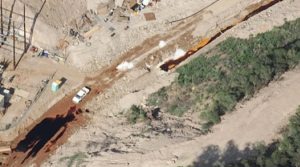In the statement, the adjunct UN-HR representative in the Central American country, Jesús Peña Palacios, also said that it is mining companies’ responsibility to respect human rights regardless of whether governments are willing or have the capabilities to enforce the law.
“They [miners] are obliged to follow their due diligence in their processes and repair their wrongdoings,” Peña Palacios said.
He also said that Sonora’s new government has to guarantee that whatever measures are taken are accessible to the affected communities and in line with international standards.

Seven years ago, a spill at Buenavista del Cobre’s mine – owned by Grupo Mexico – at Cananea sent 40,000 cubic meters of acidified copper sulfate into the Bacanuchi and Sonora rivers, leaving 22,000 inhabitants of seven municipalities without drinking water.
Agriculture, stock breeding, mining, tourism, and handicrafts were severely affected by the spill and many productive activities ceased to exist.
Last year, the Mexican government admitted that the aquifers that provide water to thousands of people still contain dangerous amounts of toxic metals and set up an October 4, 2021, deadline to have an official environmental diagnosis.
For this diagnosis, the Federal Attorney for Environmental Protection is expected to provide proof of contamination, while the Environment and Natural Resources Secretariat will monitor mining operations and water quality in the region. In addition to this, the government promised to reestablish the Sonora River Trust and to review existing aquifers and water concessions.
The approximately $106-million fund was created on September 11, 2014, by Grupo México with the goal of remediating the environmental and health damages caused by the spill. However, according to El Informador newspaper, it was closed after less than 1% of the total amount had been spent and most promises had not been fulfilled.
Among the things that were done was the drilling of 18 new wells and the installation of nine water treatment plants, out of 36 that were promised.
Interviewed by El Informador, Francisco Ramón Miranda, founding member of the Sonora River Basin Committee, said that none of the nine treatment plants actually works because even though they were installed, no one taught people in the community how they operate.
The activist also said that most of the indemnification funds that were supposed to go to the victims ended up in the hands of politicians, public servers, and other people that don’t live in the affected communities.
“We were used as a political looting tool,” he said.




